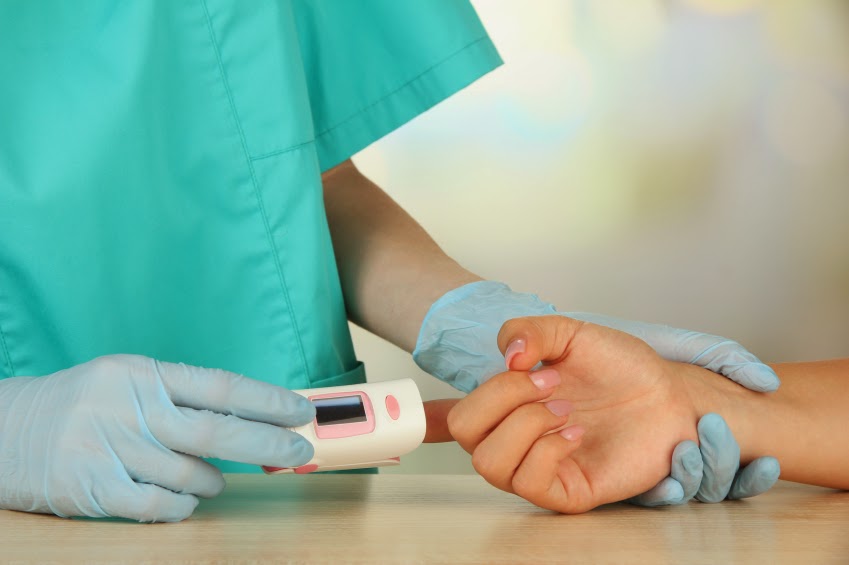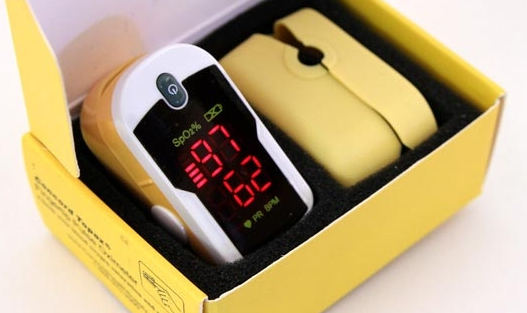A Brief History of Pulse Oximetry
Pulse Oximetry, which is a method for measuring and monitoring the oxygen saturation or percentage of oxygen in a patient's blood, has been around since the 1970s. Pulse Oximeters first became commercially available in the early 1980s. It was then that this technology started being used widely in hospital operating rooms for monitoring oxygen levels of surgical patients undergoing procedures involving anesthesia. Prior to the availability of pulse-ox equipment, blood oxygen levels of patients in operating theaters were determined by doing arterial blood gas testing in a laboratory. This process of collection and processing of blood was time consuming; often taking longer than it would take for a patient to go brain dead from lack of oxygen while on the operating table.
Prior to the availability of pulse-ox equipment, blood oxygen levels of patients in operating theaters were determined by doing arterial blood gas testing in a laboratory. This process of collection and processing of blood was time consuming; often taking longer than it would take for a patient to go brain dead from lack of oxygen while on the operating table.By the middle 1980s, pulse oximetry was being used in all operating rooms in the U.S. where anesthesia was being used. This was an incredibly important advancement for surgeons and anesthetists in providing more accurate patient monitoring. Soon the use of these devices became common in recovery rooms, intensive care units and even on emergency vehicles responding to medical emergencies in the field.
Now, pulse oximeter come in a variety of sizes and can be used by hospitals, EMTs, in-house patients and those who are into adventure sports. The main purpose is to monitor the blood oxygen saturation level in the blood.
Saving Lives Also Extends to CO2 Monitoring
Besides the ability to get accurate readings on SpO2, another important step in patient care came through the advancements made in capnography, which is the discipline involved in measuring and monitoring carbon dioxide (CO2) output of a patient. The ability to have a precise CO2 measurement is also an important factor in the management of administering anesthesia during a surgical procedure. In the field, EMS crews use capnography when putting an endotrachael tube in place to ensure it's located properly. An improperly placed airway can lead to patient death and, with an accurate readout of CO2 gases, proper placement can be verified.Sleep apnea, which is breathing disorder affecting individuals while they're sleeping, often goes undetected by those suffering from the condition. It involves bouts of shallow breathing or stopped breathing that can last anywhere from several seconds to minutes. In cases where sleep apnea is suspected in a patient, pulse oximetry can be used in the patient's home to determine if blood oxygen levels are being compromised during nighttime sleep. Even though an individual may be ignorant to the sleep apnea from which he/she is suffering, the effects of low oxygen in the blood and lack of deep sleep will be debilitating.
Why Measure Blood Oxygen Levels?
Oxygen saturation is a term that refers to the concentration of O2 in the blood, expressed as a percentage. Another word for oxygen saturation is oxygenation, and it is usually written in the medical community as SpO2. The human body requires and automatically strives for a precise balance of oxygen in the blood. Normal levels of oxygenation in arterial blood are between 95-100%, with anything lower than 90% considered hypoxic. A blood oxygen level of less than 80% is a serious situation that could soon result in organs such as the heart and/or brain deteriorating to the point of causing cardiac or respiratory arrest.Pulse Oximeters are able to precisely measure the blood's SpO2 in a patient wearing the device on a finger. The pulse-ox device sends out two separate light beams, one red and one infrared, which travel from one side of the finger to the other, where it strikes a photo-detector. The measurement made is related to how these two light beams change when traveling through the arterial blood in the finger and a relationship is made between the difference between oxygen poor venous blood and oxygen rich arterial blood.

